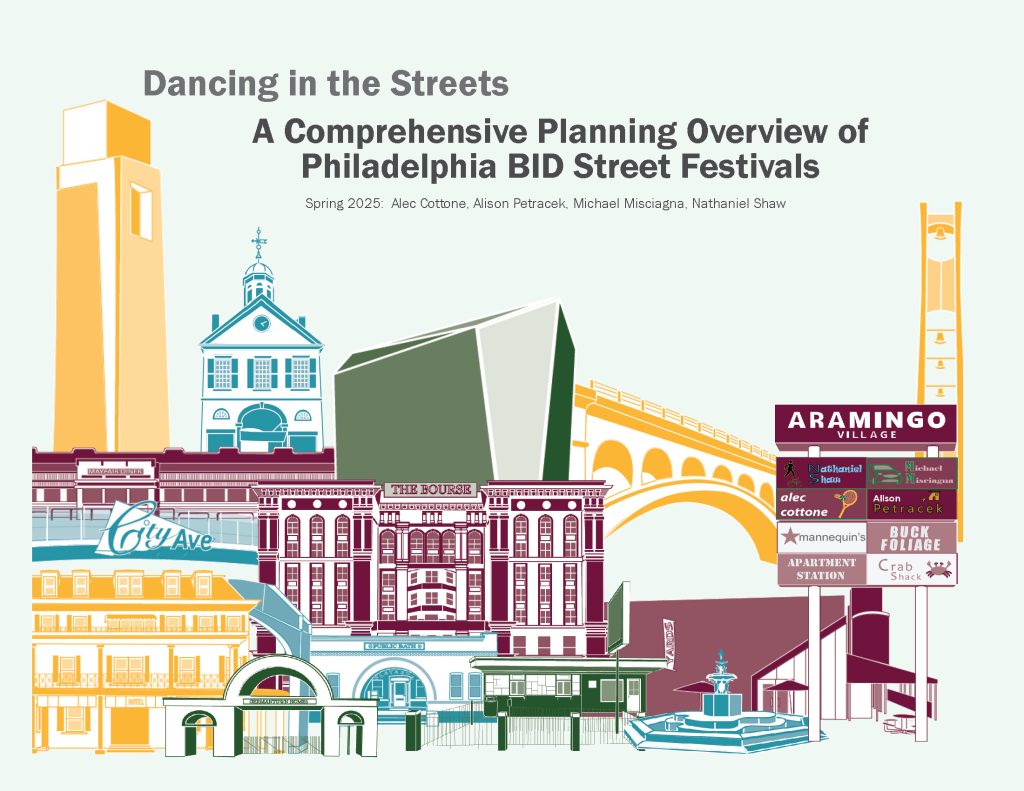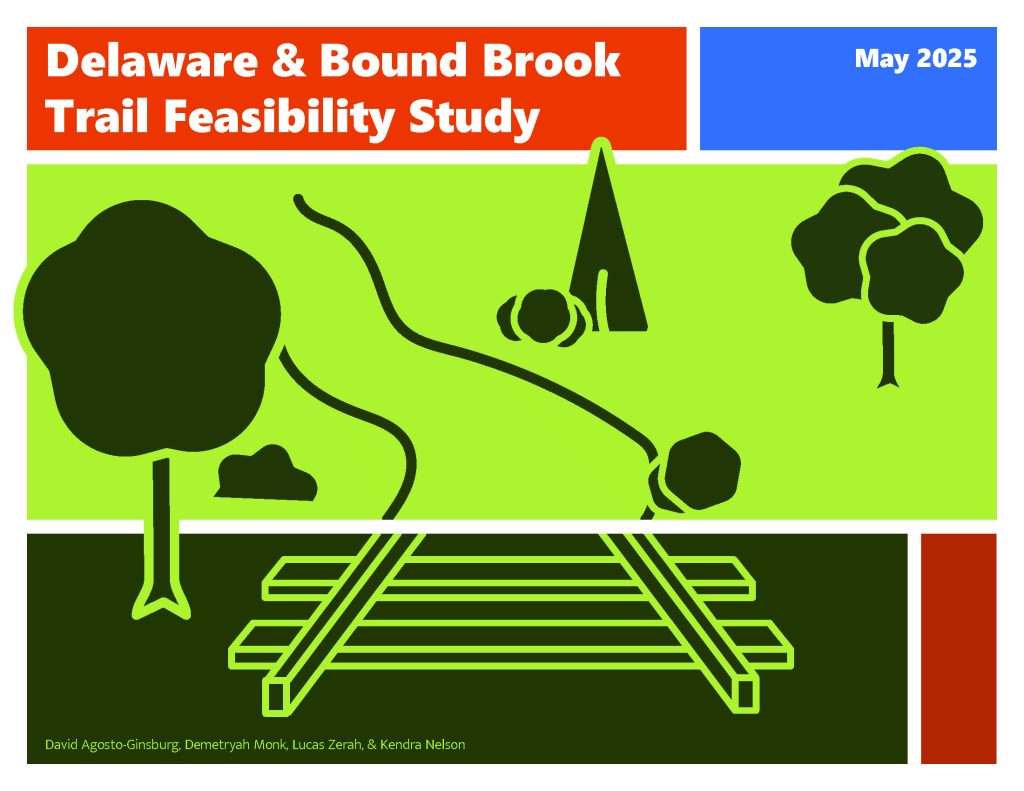In 2025, eight graduate planning students collaborated on two studio projects. Both reflect our program’s focus on engaging with practice, and having our students deliver professional products to community clients. One team worked with the Philadelphia BID Alliance on examining the rising costs of running street fairs and other special events, developing recommendations on how the City can better support these vital activities in our commercial corridors. Our second team conducted a detailed feasibility study for a future multi-use trail in the City of Trenton along the old Delaware and Bound Brook Railroad right of way.

Festivals make our city vibrant and are essential engines for local economic growth that must be encouraged and continued. In Philadelphia, many of the most popular festivals and street fairs are run by members of the Philadelphia BID Alliance, a coalition between sixteen of Philadelphia’s business development associations. In this study, the studio team found that Business Improvement Districts (or BIDs) face serious challenges in hosting festivals and street fairs that must be addressed.
This report is guided by three objectives: document the processes and procedures to run a festival in Philadelphia; to investigate increasing costs faced by BIDs to run these events; and to recommend to the BID Alliance and the City ways to improve their success.
We find that BIDs face a variety of challenges that include differences in security requirements for festivals dependent on police district, a complex city application and permitting process, and various street designs and limited resources that raise the cost of frequent festivals. Other findings detailed in the report include the enormous contribution festivals have on local businesses in sales, as well as the cultural impact and tourism these festivals bring to their communities. These findings are a product of dozens of interviews with BID staffers, police officers in three different districts, several city agencies, and 20 neighborhood businesses. To address the challenges noted in the report, we present nine recommendations for the members of the BID Alliance to pursue with their partners in the City of Philadelphia, and the business community.

The Delaware and Bound Brook Trail Feasibility study leverages momentum gained from previous bicycle, pedestrian, and trail efforts by preliminarily analyzing the feasibility of and developing recommendations for the Delaware and Bound Brook Trail. Recognizing trails’ potential to enrich communities by providing additional connections to essential community resources, the City of Trenton hopes to explore expanding their current bicycle, pedestrian, and trail networks by investigating the
feasibility of the Delaware and Bound Brook Trail.
The Delaware and Bound Brook Trail is a potential trail identified in local and county plans including the Trenton Trails Plan and the Trenton250 Master Plan. The proposed trail spans from Hillcrest Ave to Calhoun Street and follows an abandoned CSX rail line, allowing for a potential rail trail. Upon closure of the rail services, some of the parcels adjacent to the trail have been sold or redeveloped for other uses. The study area also includes the proposed trail extension, which would offer connections to the Battle Monument.
The project team developed recommendations for the Delaware and Bound Brook Trail. Upon evaluation of the study area, it was found that a 10-to-12-foot off-street trail is feasible along much of the identified trail route. For the purposes of this report, the trail has been organized into four segments based on the quality of rail right-of-way and development patterns. The preferred design follows the proposed off-street route as reflected in several local plans. However, certain segments experience land ownership and width restraints that may limit the feasibility of the preferred route. For this reason, the project team developed on-road alternatives for each segment. Preliminary informal conversations with DVRPC suggest the full corridor may range between $2.6M and $3.6M based on implementing each segment’s length, the number of high visibility beacons, and ADA-complaint ramps.